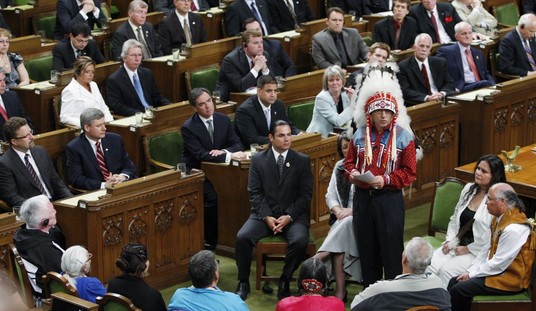WASHINGTON – Republican groups presented an optimistic, confident outlook of their position for the fall elections on Wednesday – one hundred days before Americans head to the ballots.
The five GOP committees overseeing presidential, Senate, House, gubernatorial and state legislative races hosted a joint press briefing on Capitol Hill, where they highlighted their coordinated strategy for the November elections.
Republican National Committee Chief of Staff Mike Shields said the idea behind the event was to highlight how well the groups are “working together.”
Shields said there are some “common things in many of the different races that makes us feel good about where we are headed.”
“We are in a very good position because we have a motivated base,” Shields said.
He confidently predicted that victories at the ballot box in 2014 would eclipse the sweep in 2010 that gave Republicans the House majority. Shields said this is due to “major gains in the GOP brand,” combined with the general dissatisfaction among voters about the nation’s direction.
Shields cited a poll that showed 53 percent of Americans believe it is important to put Republicans in charge to offset Obama and his party allies.
He explained the GOP’s strategy ahead of the midterm elections and spoke of the steps the RNC has taken to increase voter support in targeted districts.
After 2012, the RNC decided to focus on two things: building out its ground game and working on its data infrastructure.
The RNC has recruited 16,630 precinct captains and dispatched 304 field staffers – 24 state directors and 280 organizers – to try to mobilize 10 million “low-propensity voters” in November. This staff also includes 30 Hispanic engagement officers, and 15 African-American and eight Asian-American engagement staff.
Part of this new push is building the infrastructure for the thousands of volunteers who will be walking in the targeted precincts and using “canvassing apps” and other data-driven technology that will provide real-time information to them.
RNC reported that it has already made more than 1.3 million voter contacts.
Shields denied that Republicans were trying to “emulate” Obama’s successful 2008 and 2012 campaigns, which saw them leading in aggressive voter contact and technology. Instead, he said, Republicans are trying to surpass them.
“I always say, the Democrats put up Sputnik, we can put a man on the moon,” Shields said.
National Republican Congressional Committee Executive Director Liesl Hickey described this year’s Republican congressional candidates as one of the “most exciting recruitment classes” that she can remember.
Hickey said the Democratic Congressional Campaign Committee (DCCC) is spending most of its money on defense to “stop the bleeding” and hold on to its seats in the House.
She noted that 68 percent of the NRCC spending has been on offense, compared with 48 percent by the DCCC.
House Republicans are overwhelmingly favored to hold their majority, which currently stands at 233-199, with two vacancies in Democratic districts.
Republicans are aiming to secure as many as 245 seats, Hickey said. She added that she was “surprised” that House Minority Leader Nancy Pelosi (D-Calif.) predicted this week that Democrats would pick up enough seats to win a majority in November.
“I feel very certain that we will win the 17 seats we need,” Pelosi told the Washington Post on Tuesday.
The DCCC outraised its Republican counterpart in the second quarter, raising $5.6 million more than the NRCC raised over the same period.
Similarly, the Democratic Senatorial Campaign Committee has raised more in campaign funds than the National Republican Senatorial Committee.
Rob Collins, executive director of the National Republican Senatorial Committee, acknowledged the money problem. But he noted Democrats have been forced to spend on defense in blue-leaning states that not so long ago seemed unlikely for Republicans to win.
Republicans need a net gain of six seats to win a majority in the Senate, where Democrats control 55 of the 100 seats.
The president’s party has lost Senate seats in the second term during every midterm since 1906. Ronald Reagan lost eight seats. George W. Bush lost six seats. Historically, the party holding the White House loses an average of 6.6 Senate seats during midterm elections in a president’s second term.
Collins noted 11 Democrats are in toss-up races, compared to only two Republicans.
Obama trailed Mitt Romney in seven states where Democrats are defending Senate seats this year. In six of those states, Obama’s margin of defeat was greater than 13 percentage points.
“So the Democrats have a historical problem, they have a geographical problem. This election is going to be about President Obama,” Collins said.
He said many vulnerable Democrats have few legislative accomplishments to tout, so they are stuck running on the president’s agenda. This poses a daunting task for them, as Obama remains unpopular in the red states where Republicans are playing offense.
“When the president gets a cold nationally, he gets pneumonia in the states we care about,” Collins said.
Obama’s sinking approval ratings are barely above 40 percent in a number of polls and even lower in states where Republicans have targeted to pick up.
Republican State Leadership Committee President Matt Walter said Republicans are seeking to “build a farm team to wipe out the next generation of Democrats” in the state legislative races.
“We have an opportunity not only to exceed our all-time highs, but to get supermajorities in a majority of legislative chambers across the country,” Walter said.









Join the conversation as a VIP Member